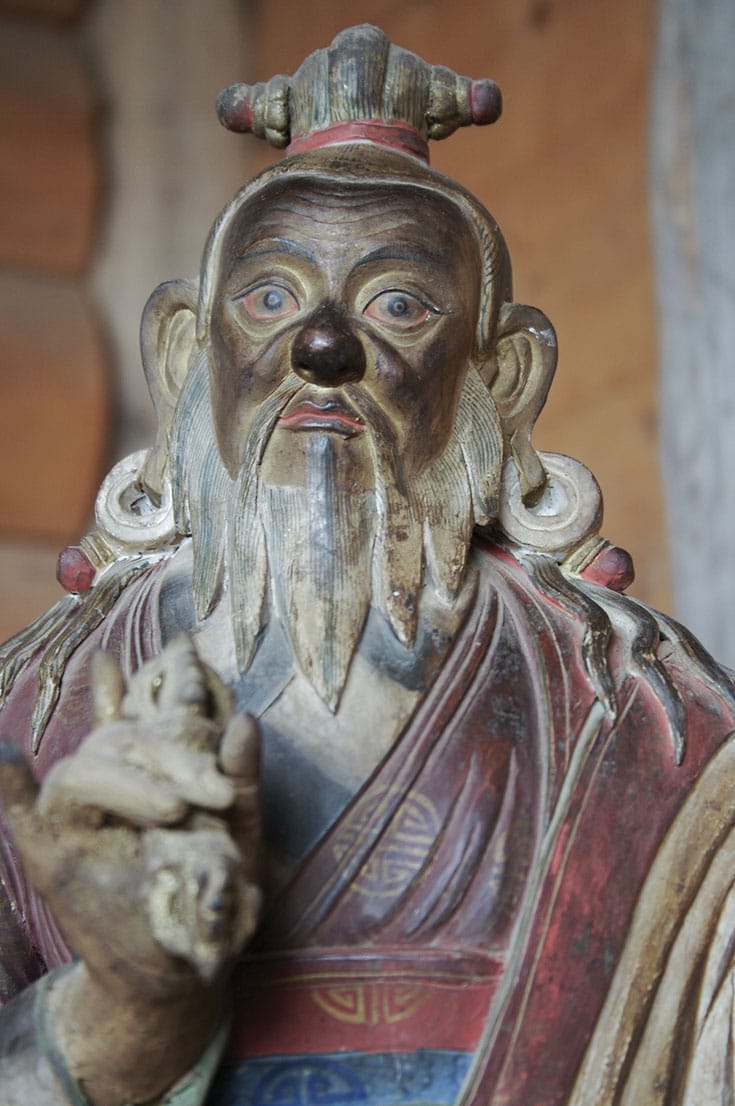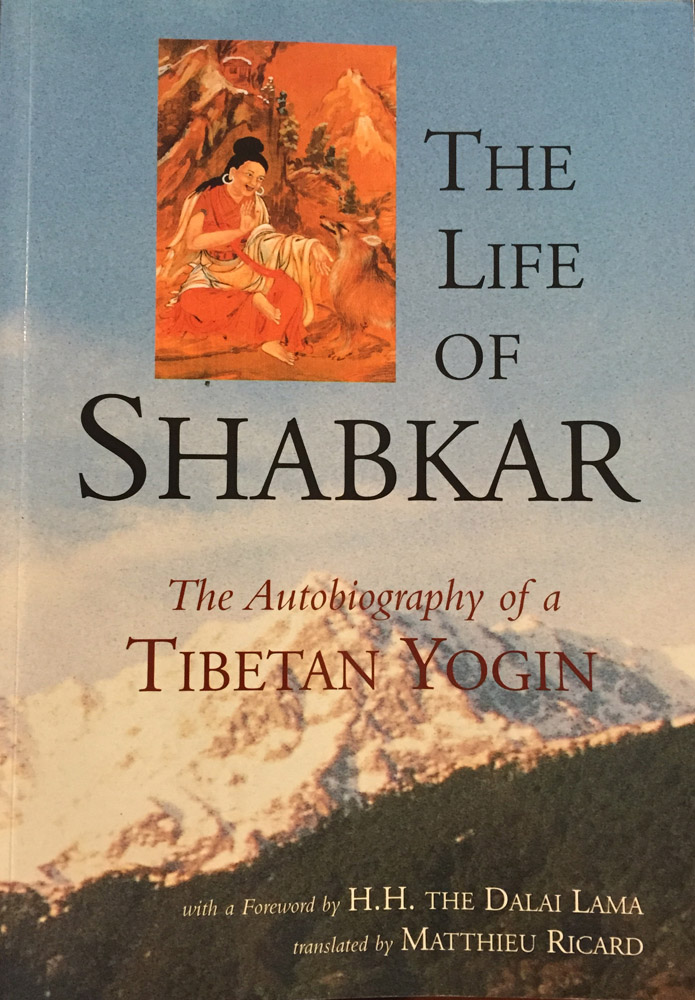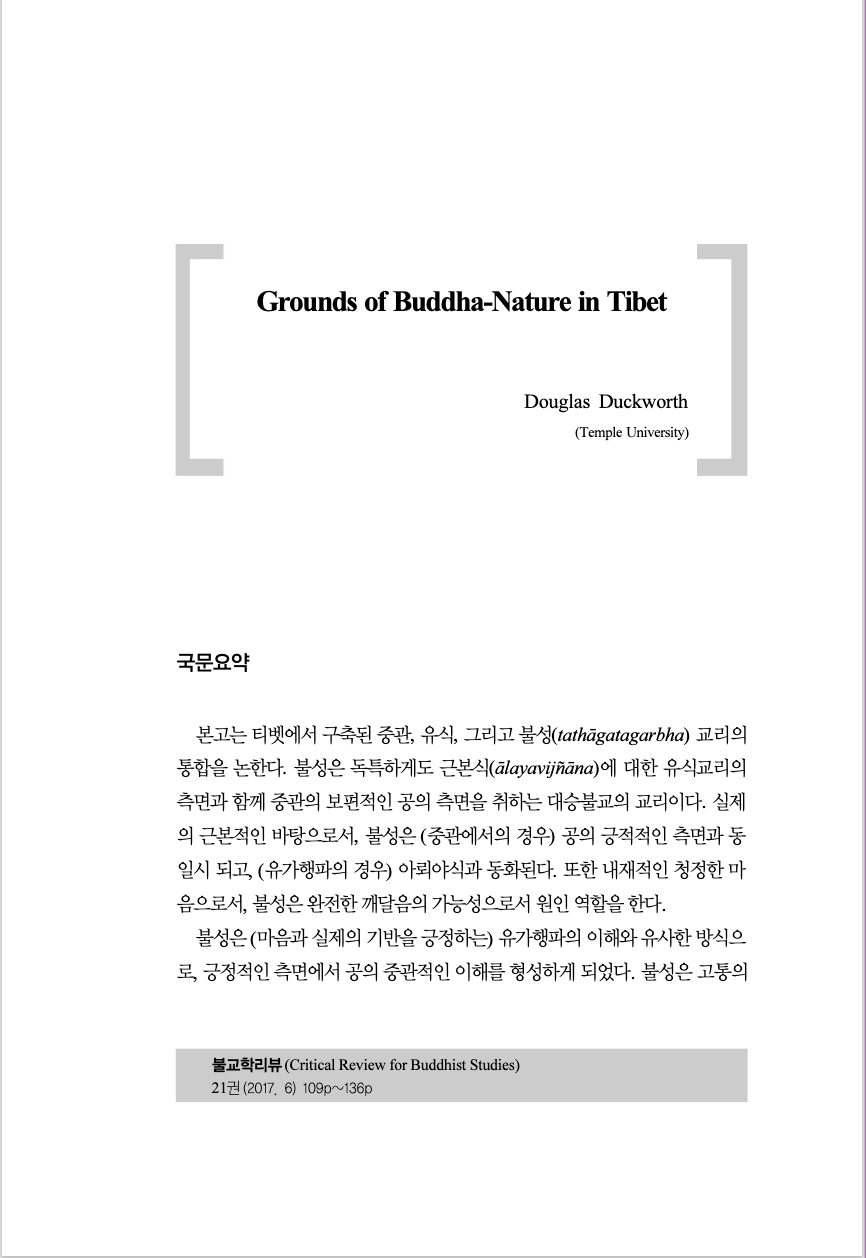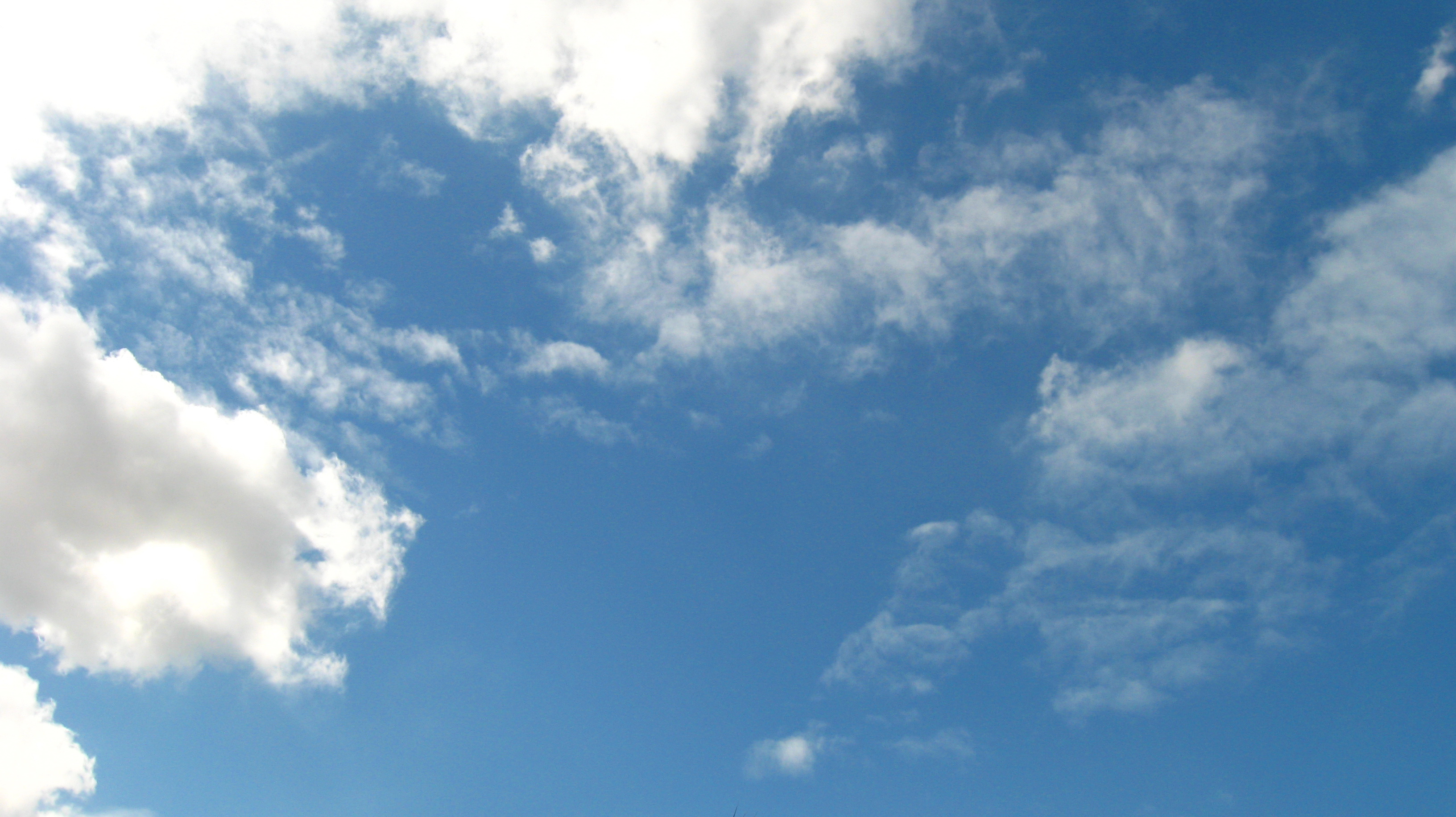Dzogchen and Buddha-Nature: Difference between revisions
((by SublimeText.Mediawiker)) |
((by SublimeText.Mediawiker)) |
||
| Line 13: | Line 13: | ||
<div class="row"> | <div class="row"> | ||
<div class="col-12 mb-3 | <div class="col-12 mb-3 d-flex justify-content-center">{{#ev:youtube|wiXXxToYvUc}}</div> | ||
<div class="col-md-6"><div class="depth-1">{{#ev:youtube|VZKCgLSnbjM}}</div></div> | <div class="col-md-6"><div class="depth-1">{{#ev:youtube|VZKCgLSnbjM}}</div></div> | ||
<div class="col-md-6"><div class="depth-1">{{#ev:youtube|C0XBC1-k7Sg}}</div></div> | <div class="col-md-6"><div class="depth-1">{{#ev:youtube|C0XBC1-k7Sg}}</div></div> | ||
Revision as of 15:30, 17 April 2019
~ Yangthang Rinpoche, Introduction to the Nature of Mind, 1994
Watch & Learn
In English with his direct, characteristic humor, Khenpo Rinpoche presents the "shining star" of buddha-nature in the minds of sentient beings as the same nature as the buddhas. He says, "We are always guided by this nature all the time whether we realize it or not."
From the Masters
Jikme Lingpa
In the context of the ground of Dzogchen, Jigme Lingpa begins chapter 11 with a clear statement about the importance of buddha-nature, given in the text as bde gshegs snying po (sugatagarbha):
- །།རྒྱལ་བས་འཁོར་ལོ་བར་པར་རྣམ་ཐར་གསུམ།
།བསྟན་བྱའི་ངོ་བོ་སོ་སོ་རང་རིག་ཉིད།
།སེམས་ཅན་ཁམས་ལ་བདེ་གཤེགས་སྙིང་པོ་རུ།
།རང་བཞིན་བཞུགས་ལ་རྫོགས་པ་ཆེན་པོར་གྲགས།- In the second turning of the Dharma wheel,
The Conqueror explained three doors of perfect liberation,
The essence of this teaching is awareness that is self-cognizing,
Which, celebrated as the Great Perfection,
Naturally resides in beings as their buddha-nature.~ English: pg. 113. Tibetan: pg. 118, lines 2-3
In the context of Refuge in the Dharma, of which there are two types, that of realization and that of transmission, the Dharma of realization is buddha-nature:
- །རྟོགས་པའི་ཆོས་ནི་་་་ །འཕགས་པའི་སྤངས་རྟོགས་ཡེ་ཤེས་སྙིང་པོ་ཅན།
- The Dharma, then, of realization...
It is the primal wisdom of elimination and realization
Possessed by Noble Beings, it is the buddha-nature.~ English: pg. 33.(Note: apparently this translation is coming from an explanation from Kanjur Rinpoche's commentary to clarify this odd phrasing...) Tibetan: pg. 40, line 3
In the context of the Vow of Bodhichitta, the cause of bodhichitta is buddha-nature.
- རྒྱུ་ནི་ཀུན་ཀྱང་བདེ་གཤེགས་སྙིང་པོ་ཅན།
རྐྱེན་ནི་དགེ་བའི་བཤེས་ལ་རབ་བརྟན་པས།
ཡིད་བཞིན་ནོར་བུ་ལྟ་བུའི་བླ་མ་མཆོག།
བྱང་ཆུབ་སེམས་ཀྱི་ཐུགས་རྒྱུད་གང་བ་དེས།- Its cause is buddha-nature found within the minds of all;
Its condition is attendance on a virtuous friend:
The perfect teacher who is like a wishing-gem,
Whose mind and heart are filled with bodhichitta.~ English: pg. 45, verse 18 Tibetan: pg. 51, line 1. Padmakara Translation Group. 2018 reprint. The Treasury of Precious Qualities called The Rain of Joy. New Delhi: Shechen Publications. Tibetan Text: རིག་འཛིན་འཇིགས་མེད་གླིང་པ། ཡོན་ཏན་རིན་པོ་ཆེའི་མཛོད་དགའ་བའི་ཆར་ཞེས་བྱ་བ་བཞུགས་སོ༎ New Delhi: Shechen Publications, 2018.
Dudjom Lingpa
The text also tells of how the Buddha nature, the heart of awareness, is utterly pure and lucid and constitutes the very life essence of all things, both samsaric and nirvanic. Ekajati declares:
- Since the fundamental nature of awareness, buddha nature, is pristine and lucid, free of sullying factors, it is "utter lucidity". Since it is endowed with the seven indestructible vajra [diamond / adamantine] attributes, it is "vajra". And since it abides as the vital essence of all phenomena of samsara and nirvana, it is "heart essence".
~ "Dudjom Lingpa", Section on Nang Jang, Wikipedia.org.
Shechen Gyaltsap Gyurme Pema Namgyal
Buddha-nature is immaculate. It is profound, serene, unfabricated suchness, an uncompounded expanse of luminosity; nonarising, unceasing, primordial peace, spontaneously present nirvana.~ The Great Medicine: Steps in Meditation on the Enlightened Mind by Shechen Rabjam, p. 4.
Dilgo Khyentse Tashi Paljor
As you progress through these three steps, spiritual qualities will naturally arise, and you will see the truth of the teachings. Those qualities will bloom spontaneously because the buddha nature within you is being revealed. The buddha nature, or tathagatagarbha, is present in all beings, but is hidden by obscurations, in the same way that buried gold is hidden by the earth under which it lies. As you listen to, reflect, and meditate on the Dharma, all the inherent qualities of your buddha nature will be actualized.~ The Heart of Compassion (2006), Wikiquote.org.
Tulku Urgyen Rinpoche
If you believe there is a thing called mind, it is just a thought. If you believe there is no thing called mind, it’s just another thought. Your natural state, free of any kind of thought about it—that is buddha-nature. In ordinary sentient beings, this natural state is carried away by thinking, caught up in thought. Involvement in thinking is like a heavy chain that weighs you down. Now it is time to be free from that chain. The moment you shatter the chain of thinking, you are free from the three realms of samsara.
[...]
Our enlightened essence, the buddha-nature, is like the sun itself, present as our very nature. Its reflection can be compared to our thoughts—all our plans, our memories, our attachments, our anger, our closed-mindedness, and so on. One thought arises after the other, one movement of mind occurs after the other, just like one reflection after another appears. If you control this one sun in the sky, don’t you automatically control all its reflections in various ponds of water in the whole world? Why pay attention to all the different reflections? Instead of circling endlessly in samsara, recognise the one sun. If you recognise the nature of your mind, the buddha-nature, that is sufficient.~ "As the Clouds Vanish", Tricycle, Winter 1999 [1]
Empty cognizance is our nature. We cannot separate aspect of it from the other. Empty one aspect of it from the other. Empty means "not made out of anything whatsoever"; our nature has always been this way. Yet, while being empty, it has the capacity to cognize, to experience, to perceive. It's not so difficult to comprehend this; to get the theory that this empty cognizance is buddha nature, self-existing wakefulness. But to leave it at that is the same as looking at the buffet and not eating anything. Being told about buddha nature but never really making it our personal experience will not help anything. It's like staying hungry. Once we put the food in our mouth, we discover what the food tastes like. This illustrates the dividing line between idea and experience.
[...]
We must grow up, just like a new-born baby. The infant born today and the adult 25 years later is essentially the same person, isn't he? He is not someone else. Right now, our nature is the buddha nature. When fully enlightened, it will also be the buddha nature. Our nature is unfabricated naturalness. It is this way by itself: like space, it does not need to be manufactured. But we do need to allow the experience of buddha nature to continue through unfabricated naturalness.~ Excerpt from As It Is by Tulku Urgyen Rinpoche, Rangjung Yeshe Publications, 1999. Accessed in "Dzogchen, by Tulku Urgyen Rinpoche", Buddhism now, 3 July 2013 [2]
Yangthang_Rinpoche
In our present circumstances we can also consider, first, that the mind of all sentient beings is buddha, that all sentient beings possess the buddha nature, which is their very essence, and second, that we have all obtained the precious human rebirth. With these two things together the teachings are allowed to be transmitted and received.
[...]
The "mind nature teaching", the "practice experience", and the "meditation" are all different names for the same thing, which essentially is that all sentient beings possess the foundational buddha nature. How is it that they have come to possess this buddha nature, which is, in fact, their innate presence, their inherent essence? How is it that this is the fundamental nature of all living beings? This is what the lama reveals to the disciples in what is called the "sem tri", which is an introduction to the mind's nature. After receiving this introduction, through training and through one's ability to naturally comprehend, when one ascertains the nature as it is, this ascertainment is called "the view". The view is then the primary practice. Maintaining the view for months and years, with enthusiastic effort, is called "meditation". While one is engaged in meditation, the unfailing ability to observe one's behavior according to cause and result is called the "conduct". When view, meditation, and conduct reach their resultant stage through the effort of the practitioner, then in dependence upon the capabilities of the practitioner—be they superior, mediocre, or inferior—the corresponding result will occur. In the superior case the result will be the dharmakaya realization, in the mediocre case realization will occur at the moment of death, and so forth. The threefold practice of view, meditation, and conduct, and the results achieved thereby, are the subject of this type of mind nature teaching.~ Introduction to the Nature of Mind, Yeshe Melong Publications, 1994
Chögyam Trungpa Rinpoche
When you have completely accomplished the shamatha-vipashyana practice, you have a sense of reward. You experience joy in the possibility of buddha nature, but you may still feel skeptical. Although you begin to feel that buddha nature is a possibility, you think the whole thing may be a hoax. You begin to doubt the teachings. The idea that you already have a built-in buddha in you is something that you cannot quite imagine. It seems to be too good to be true, and you begin to feel that maybe it is not true. You think that the whole thing may be a big put-on, a big joke, a lie. The birth of mahayana spirit begins with a combination of distrust and the possibility of good news. It is a very powerful emotional experience, a sweet-sour feeling. That quality of joy and delight is wisdom, or jnana, and the doubt or distrust is compassion. Doubt and compassion are both very direct. Compassion is somewhat more spacious, but the pain of doubt and compassion is the same. There is a sense of something touching your heart, and it is painful. At this point, you have the possibility of wisdom and compassion, but they are not completely finalized. It is like a fetus whose limbs are not quite formed. It is as though you are pregnant with buddha nature: you realize that something is happening even before the baby begins to kick. However, this pregnancy is different from ordinary pregnancy. Unlike a fetus, buddha nature is not a foreign body, it is a part of your whole being. You cannot have an abortion because it is too powerful to get rid of. You have to accept the whole thing.~ The Bodhisattva Path of Wisdom and Compassion (2014). "Quotes by Chögyam Trungpa Rinpoche", Tzal.org.
Chökyi Nyima Rinpoche
One should first recognize the Buddha-Nature, then train in it, and finally attain stability. In order to recognize the Buddha-Nature, we must identify exactly what is preventing us from realizing it now and what needs to be cleared away - all the passing stains of confusion. Where did these passing stains come from? The ground itself, the Buddha-Nature, is without impurity or confusion, but the temporary defilements, the stains of confusion, result from not having recognized the state of the ground.~ "Quotes by Chokyi Nyima Rinpoche", Tzal.org.
Dzongsar Khyentse
When we talk about emptiness, something beyond fabrication, we immediately think of a state of being that has no function, like a couch potato or piece of stone, but that is absolutely not correct. It is not merely a negation, elimination, or denial. It is not like the exhaustion of a fire or the evaporation of water. It is full of function, and we call this function buddha activity, which is one aspect of buddhanature. This buddhanature has an aspect of uninterrupted wisdom. This is the difficulty, because as soon as we talk about wisdom, we think in terms of cognition and the senses and their sense objects. We are curious about how a buddha perceives things. But although buddhanature is seemingly a cognizer, it has no object, and therefore it cannot be a subject. Furthermore, it’s not inanimate, nor is it animate, in the sense of mind. This is why the Uttaratantra Shastra is really complementary to the Mahasandhi (Dzogchen) teachings, which always say that mind and wisdom are separate—the dualistic mind of subject and object is separate from the nondual wisdom, which is not other than buddhanature.~ "Spotless from the Start", Lion's Roar, 2008 [3]
Other Mentions
[Dzogchen Explained]
The key to ascending through the eight phases [of Dzogchen practice] is to appreciate and settle into the Dzogchen perspective on reality, according to which the fundamental nature of ourselves—and the cosmos—is our inner pristine awareness (rikpa), also described by terms such as buddhanature, the dharma-body of a buddha, or pure, absolute space.
[...]
Dzogchen asserts, with other Mahayana traditions, not only that we all have within us the capacity to become fully enlightened buddhas but also that in some sense we already are buddhas, in that pristine awareness is the fundamental nature of ourselves and the world simply waiting to be rediscovered. This sort of "gospel of buddhanature," running counter to the "tragic sense of life" influential in traditional European culture, is more appealing to many Western seekers, accustomed as they are to the psychological lingo of self-improvement, than are accounts of Buddhism that dwell on our delusion and the sufferings they incite and emphasize that attaining enlightenment is a process requiring years, and perhaps lifetimes, of effort.
[The Life of Shabkar: The Autobiography of a Tibetan Yogin]
"Pure vision," the extraordinary outlook of the Vajrayana or Adamantine Vehicle, is to recognize Buddha-nature in all sentient beings and to see primordial purity and perfection in all phenomena. Every sentient being is endowed with the essence of Buddhahood, just as oil pervades every sesame seed. Ignorance is nothing more than lack of awareness of this very Buddha-nature, as when a pauper does not see the golden pot buried beneath his own hut. The spiritual path is thus a rediscovery of this forgotten nature, just as one sees again the immutable brilliance of the sun once the clouds that were masking it have been blown away.
~ Translator's Introduction, pg. xvii
The Vajrayana path is based on pure perception and is motivated by the aspiration to free swiftly oneself and others from delusion through skillful means. The Mahayana chiefly considers that the Buddha nature is present in every sentient being like a seed, or potentiality. The Vajrayana considers that this nature is fully present as wisdom or pristine awareness, the undeluded aspect and fundamental nature of the mind. Therefore, while the former vehicles are known as "causal vehicles," the Vajrayana is known as the "resultant vehicle." As it is said, "In the causal vehicles one recognizes the nature of mind as the cause of Buddhahood; in the resultant vehicle one regards the nature of mind as Buddhahood itself." Since the "result" of the path, Buddha hood, is primordially present, one only needs to actualize it or divest it of its veils.
~ pg. 551
The fruit of the Great Perfection
Is primordially present as the Buddha nature.
It does not need to be obtained:
It is ripe within oneself.
~ pg. 554
[Grounds of Buddha-Nature in Tibet]
The distinction that Śākya Chokden makes between two types of self-awareness reflects the distinction Longchenpa made between self-awareness (rang rig) in Yogācāra (or "Mind-Only") and the gnosis of self-awareness (so sor rang rig pa'i ye shes) in the Great Perfection (rdzogs chen). Longchenpa's distinction between the basic consciousness (kun gzhi) and the Truth Body (chos sku) similarly conveys this fundamental difference between distorted and undistorted worlds. In fact, Longchenpa distinguished his view of the Great Perfection from that of "Mind-Only" in terms of buddha-nature, expressed as the "basic element" (khams):
- Proponents of Mind-Only assert a changeless permanence and mere [ordinary] awareness as self-illuminating, but this position differs because we assert the unconditioned spontaneous presence beyond permanence and annihilation, and the spontaneously present qualities of the basic element."
[Article: Dzogchen]
According to Malcolm Smith, the Dzogchen view is also based on the Indian Buddhist Buddha-nature doctrine of the Tathāgatagarbha sūtras. According to the 14th Dalai Lama the Ground is the Buddha-nature, the nature of mind which is emptiness. According to Rinpoche Thrangu, Rangjung Dorje (1284–1339), the third Karmapa Lama (head of the Karma Kagyu) and Nyingma lineage holder, also stated that the Ground is Buddha-nature. According to Rinpoche Thrangu, "whether one does Mahamudra or Dzogchen practice, buddha nature is the foundation from which both of these meditations develop."




